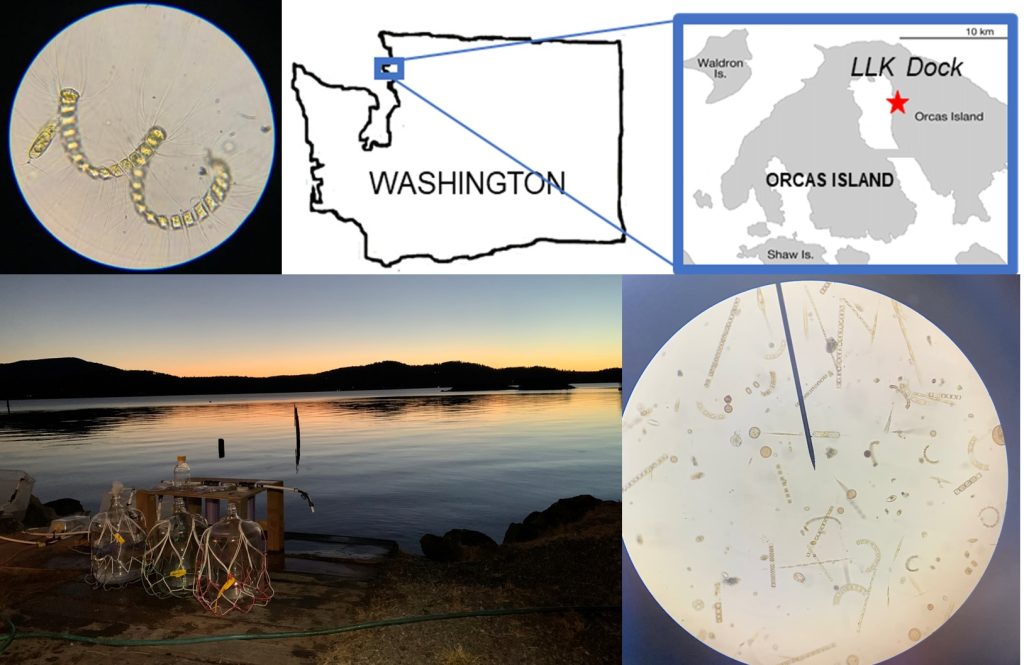
Harmful algal blooms (HABs) are a growing threat to our environment and public health due to an increase in their intensity and longevity as a result of recent climate trends. HABs occur when toxic species of phytoplankton grow to high numbers, dominating the plankton community. Human or wildlife exposure to algal-produced toxins can result in a suite of adverse symptoms and even death. Thus, it is imperative to understand HAB dynamics to minimize public exposure. Currently, we cannot predict when a HAB is going to occur, and it is hard to adequately alert the public ahead of time. Here, we are working on filling this information gap surrounding our ability to determine HAB onset.
Phytoplankton and bacteria closely communicate in the water column through the exchange of small metabolites. Their interactions have been found to impact the dynamics of algal bloom formation in model systems, such as causing algal populations to drastically increase or decrease in abundance. We are collaborating with Brook Nunn’s group at the University of Washington to characterize the microbiome, proteome, and metabolome of the phytoplankton and bacteria community in the time preceding HAB onset off the coast of Orcas Island in Washington. The Kubanek lab is primarily focused on metabolomic analysis with the ultimate goal of identifying specific metabolites that are biomarkers for HAB onset.